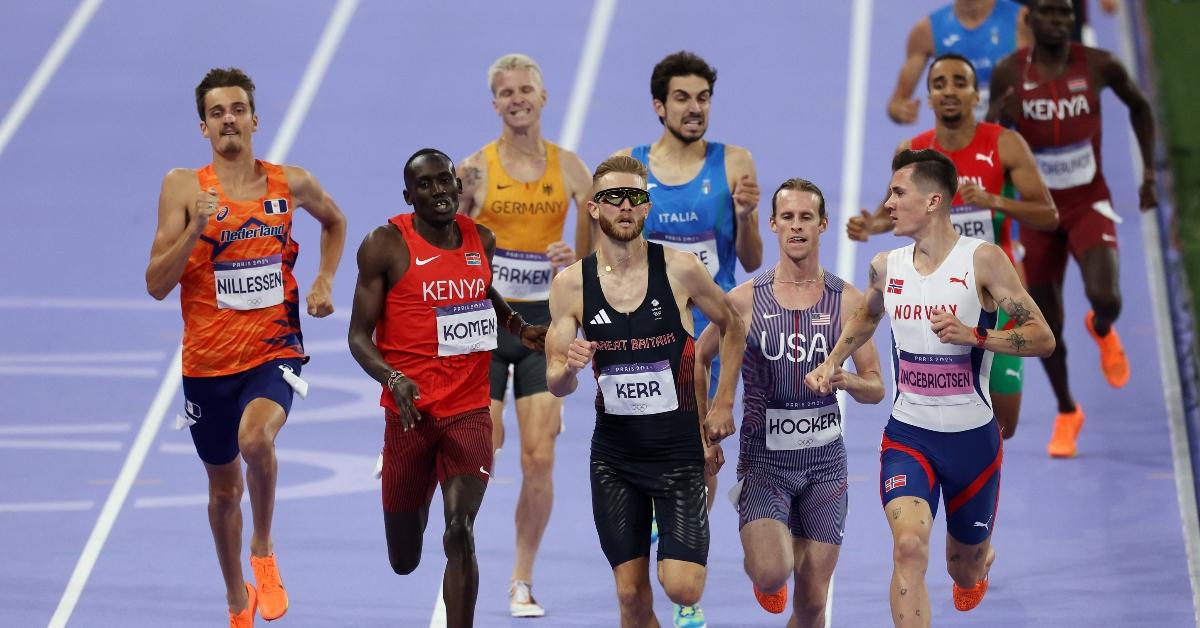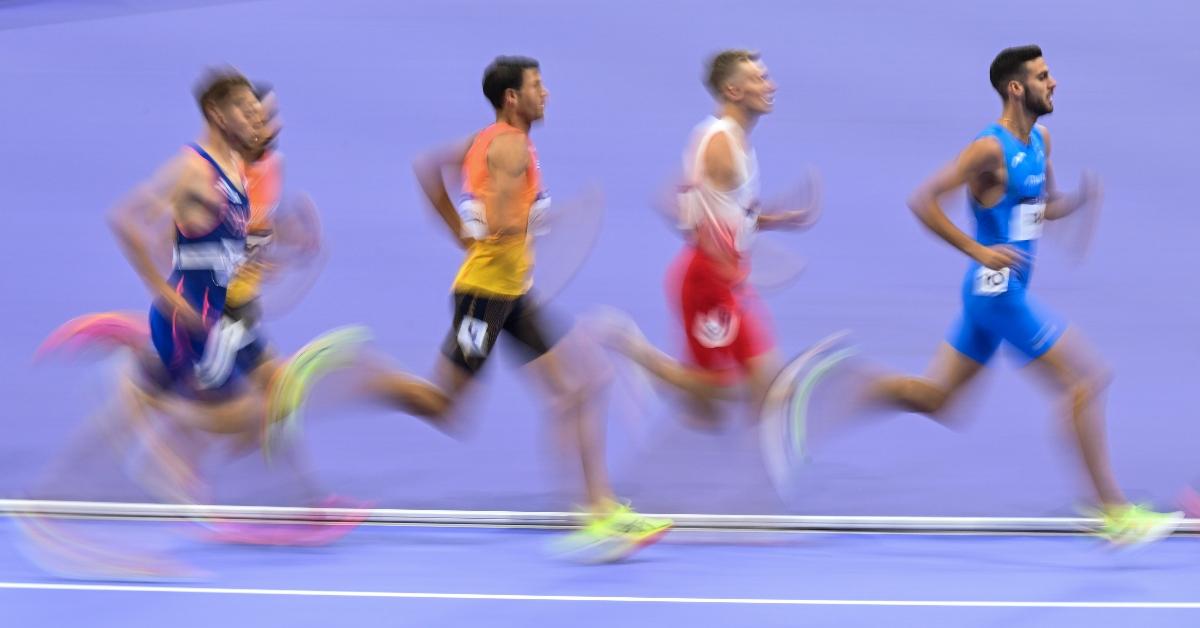In the Olympics, Why Do They Run 1500 Meters Instead of a Mile?
"In the mile, I always knew where I stood in relation to the rest of the race, and how far I had come and had yet to go. But the 1,500 was always disorienting," wrote Oliver Staley.
Published Aug. 5 2024, 2:20 p.m. ET

Nikki Hiltz reacts while crossing the finish line to win the women's 1500 meter final on Day 10 of the 2024 U.S. Olympic Team Track & Field Trials at Hayward Field on June 30, 2024, in Eugene, Oregon.
If you've enjoyed watching Olympic runners as they pull off feats that we mere mortals could only dream of doing, you may have found yourself wondering about why they run 1500 meters instead of 1600 meters.
After all, 1600 meters is around the length of a mile, so wouldn't that make more sense? Why run less than a mile?
Here's a quick breakdown of the situation.

Runners compete during the men's 1500 m semi-final on Day 9 of the 2024 Olympic Games in Paris at Stade de France on Aug. 4, 2024.
Why do they run 1500 meters instead of 1600 meters in the Olympics?
There are 1,609.344 meters in a mile, meaning there's about a 109-meter distance between 1500 meters and a mile. If you grew up in the U.S. and remember having to complete the mile in gym class (a horror, for many of us), you probably remember having to run around the track four times (or a little over that, technically). If you changed this from the mile to 1500 meters, you'd instead be running about three and three-quarter laps around the track.
And if you were to ask competitive runners in the U.S. about it, they'd probably tell you that running a mile makes more sense for them than running 1500 meters on a standard 400-meter track. After all, a mile is easy to keep track of while you're running — for instance, you know that after you've run twice around the track, you're at the halfway point. (Not to mention that it's easy for spectators to understand this too.) And if you're running, this all makes it easier to keep track of your pace, which is crucial.

Runners compete at the preliminary competition for the men's 1500 m at the 2024 Summer Olympic Games in Paris at the Stade de France on Aug. 3, 2024.
As writer Oliver Staley wrote for Quartz, reflecting of his time as a "mediocre" high school track athlete: "In the mile, I always knew where I stood in relation to the rest of the race, and how far I had come and had yet to go. But the 1,500 was always disorienting. Was I gauging my laps from the start of the race? Or from the finish?"
"When I had completed two laps, the natural halfway point, I was more than halfway done, which meant the final lap came up on me faster than I felt it should," Staley continued, noting that the "weirdly abbreviated distance" didn't help his already panicked state of mind while running.
So, why do the Olympic runners race in 1500 meters instead of a mile? Well, it's just always been that way, basically. At the first Olympic games in 1986, the 1500 meter race was chosen over the mile. And with the sport becoming more international over time, it made sense to stick with the metric system, which is used by most of the world. There's also the fact that 1500 meters makes for a nice round number. And while there are those who are still campaigning for the mile, much of the U.S. running world has already adapted to the metric measurement.